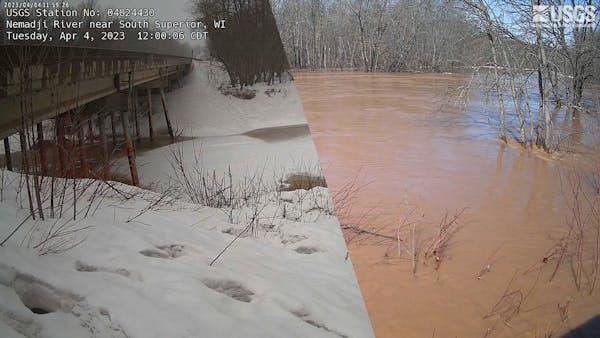Cities across Minnesota are bracing for floods brought by near-record snowfall, just months after getting past their worst drought in decades.
The Jekyll-and-Hyde precipitation swings between severe floods and extreme droughts over the past five years are part of a larger pattern in Minnesota, where the weather is rarely subtle. Over the past 100 years, many of the state's driest spells were quickly followed by some of its rainiest, said Kenny Blumenfeld, senior climatologist with the Minnesota Department of Natural Resources.
"Historically, we shouldn't be surprised when we go from a dry to a wet pattern, even when the swings are astonishingly large," Blumenfeld said.
Minnesota went through one of its worst droughts in 1976. That year, the city of Ortonville in west central Minnesota received less than 7 inches of rain — the lowest amount ever recorded in the state.
"It was just an extraordinary drought — it was a hot summer and it was a dry summer," Blumenfeld said.
The next year, however, historic rains came: 1977 was the wettest year the state had ever recorded, setting a precipitation record that held until 2019.
"We came out of a horrendous drought and bounced to almost unthinkable wetness," Blumenfeld said.
The same pattern held a decade later. An extreme statewide drought peaked in 1988 and lingered into early 1990. Then, in 1991, rain swamped the state. More than 53 inches fell on St. Francis, north of Minneapolis, which was then the most ever in a Minnesota city.
Droughts in 2011 and 2012, as well, were followed by years of abnormally high rain totals.
While swings between extremes are nothing new in Minnesota, what is different now is the amount of precipitation falling during wet years. Because of the changing climate, when it rains it tends to rain a little more, and when it snows it tends to snow a little more, Blumenfeld said.
"Because the global temperatures are higher, there is more evaporation from the ocean, which puts more humidity in the atmosphere," he said. "So when a weather system comes through and taps into that moisture, it has more water to work with than in previous decades."
When St. Francis got 53 inches of rain in 1991, it broke an 80-year-old record. Since 2016, nine other cities have surpassed that 1911 mark, and St. Francis' record has been broken five times.
With river communities on guard for spring flooding this year, the severity of last year's drought is actually helping. Rivers are high and rising across Minnesota as the melt from one of the state's snowiest winters ever recorded works its way off the land. Cities along every major river including the Mississippi, St. Croix, Minnesota, St. Louis and Red are preparing dikes or closing streets and parks to brace for flooding expected to begin within the next week.
The drought left the soil so dry that the ground has been acting as a sponge, soaking up some of the water that would otherwise be rushing into overflowing rivers, said Craig Schmidt, a hydrologist for the National Weather Service.
"We don't really have a handle on how much the soil will be able to help us," Schmidt said. "We know it's a positive — that it's working in our favor."

Former MnDOT official approved as Minneapolis public works director

Jury selected for Feeding Our Future trial after unusually long process due to publicity of massive fraud case

911 transcript gives more detail of Sen. Mitchell's alleged burglary
Man shot by deputy in Montrose allegedly said during earlier clash he'd rather die than be arrested

